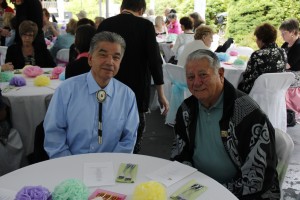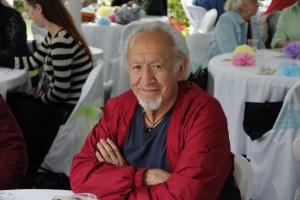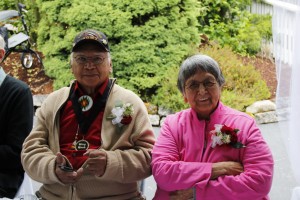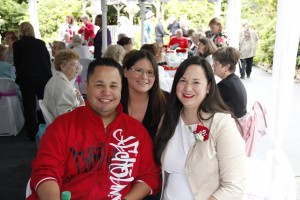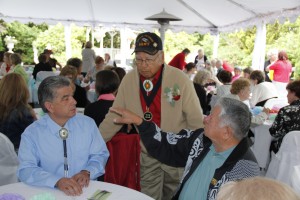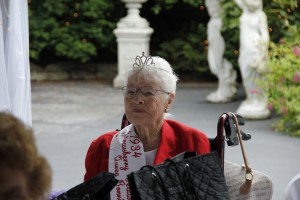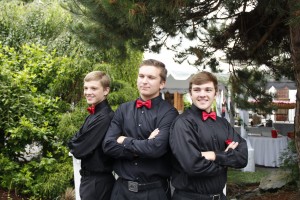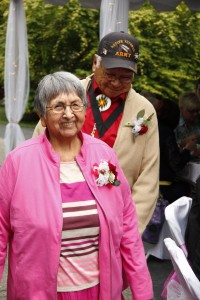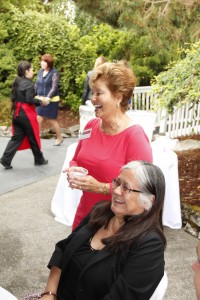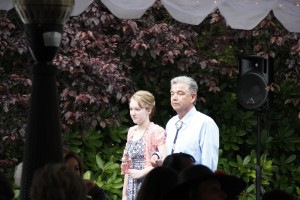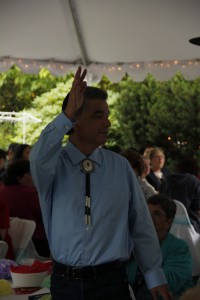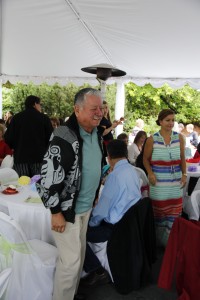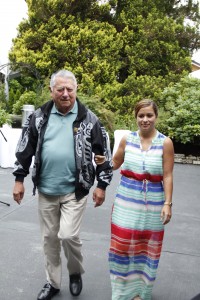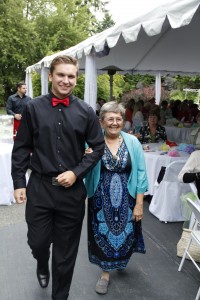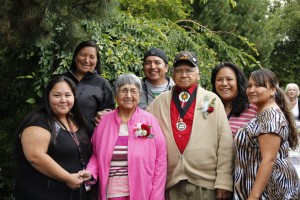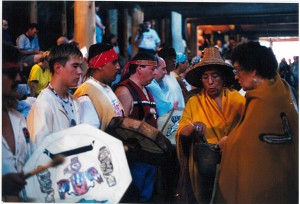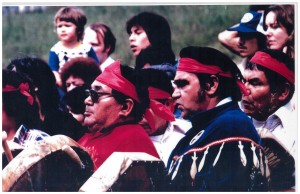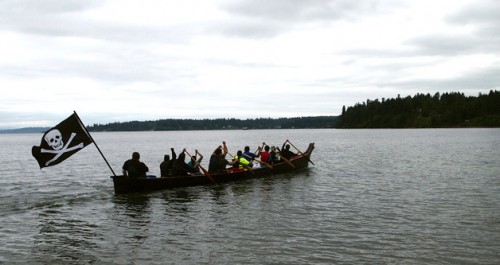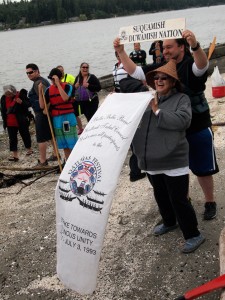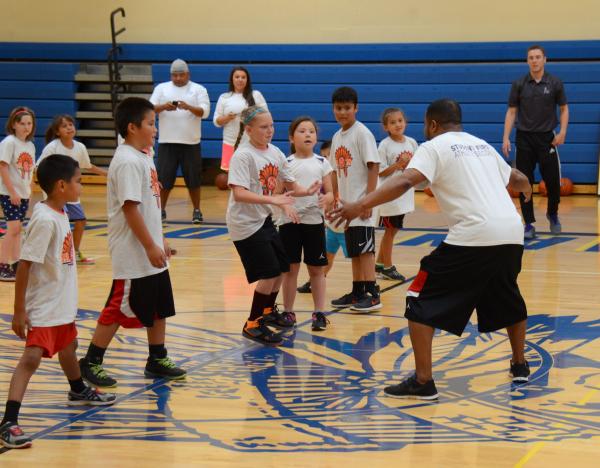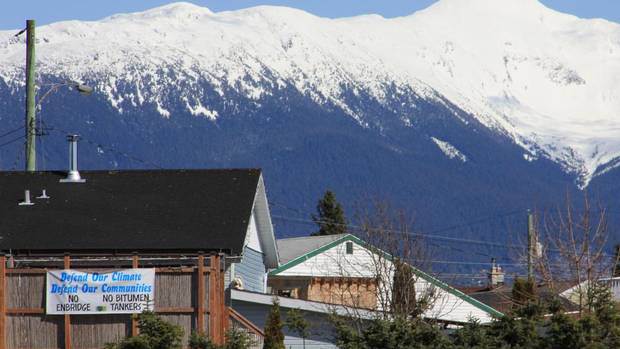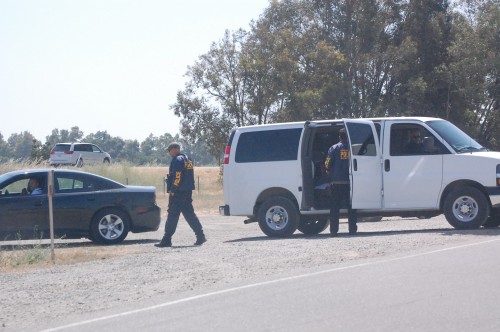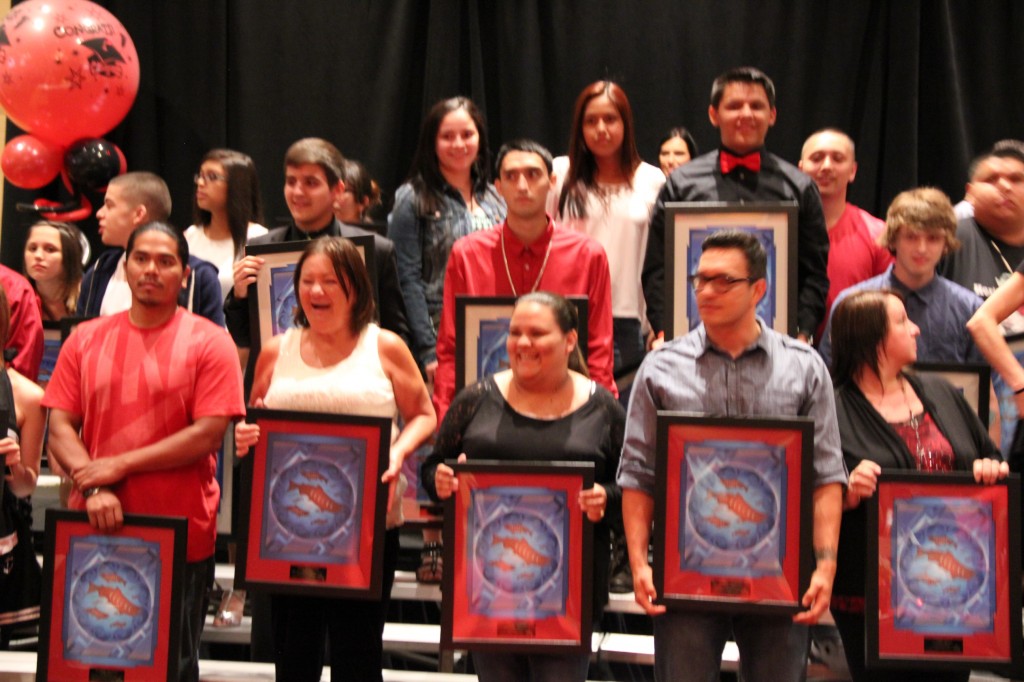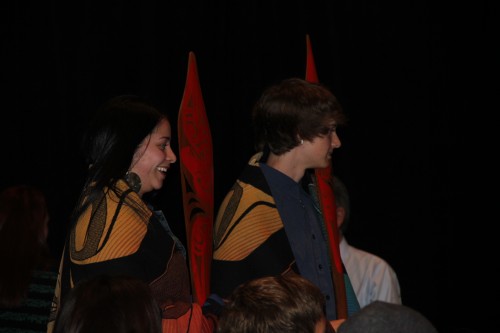Tulalip Bay Fire Department runs house fire drill
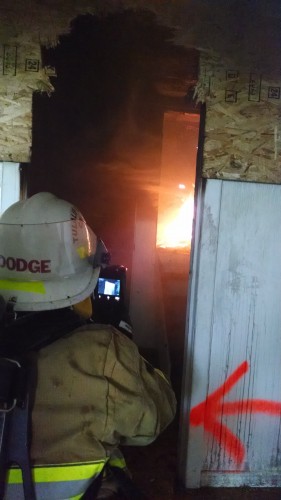
Photo: Andrew Gobin/ Tulalip News
By Andrew Gobin, Tulalip News
TULALIP – A ceiling of dense smoke hung inches above our heads as Tulalip Bay Firefighters and I crouched in the burning house. Removing my glove to snap a photo from the inside, I instantly felt the intense heat that filled the room around us. Crawling towards the burning room, my hand began to burn from the heat, forcing me to put my glove back on. Sensors measured the heat in the room where the flames were to be above 600o Fahrenheit, so Tulalip Bay Fire Chief Teri Dodge splashed the flames with the fire hose. Even through protective bunker gear I could feel the heat from the blast of steam that shot out from the doorway of the room. My air tank was out so I had to get outside.
The Tulalip Bay Fire Department burned a house slated for demolition on June 14 on Mission Beach Road, across from the cemetery. They let me join them for the drill for an exclusive look at what they do, fitting me in bunker gear (firefighter boots, pants, coat, helmet, etc.) complete with an air-pack so I could safely be in the house to observe them in action.
What good is any drill without pizza? We enjoyed a lunch of four different kinds of pizza after the first round of drills were finished. Then on to the second drill, flashovers.
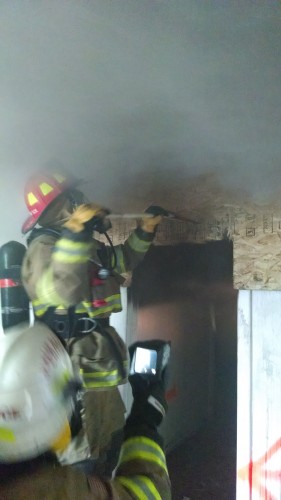
Photo: Andrew Gobin/Tulalip News
I didn’t understand the term, but it sounded exciting. Once more I geared up to go in, though I could only stay in for one round due to safety concerns. There we were, crouched down. A second room was set on fire during lunch and had grown to a good size blaze. I couldn’t get any pictures, having to keep all of my protective gear on. Site commander Tom Cohee was my guide for this round, taking the time to explain what firefighters look for in a fire. Going in we had to crawl. The temperature in the smoke above us was upwards of 200o, much hotter than the 110o on the ground where we were. A firefighter would spray water at the ceiling, and depending on how much came down, they could gauge the temperature of the air above. As things heated up, another ceiling spray, and a cloud of steam surged downward, making visibility so low I couldn’t see my hand in front of my face.
They didn’t spray again for a few minutes, letting the gasses and flames build for the flashover. Cohee explained that flashover is when the air above, which is filled with gasses from things burning, gets so hot that they catch fire and flash, allowing flames to extend out of the burning room, the length of the house ceiling. No sooner had he explained than a flame whipped across the ceiling, rolling down the back wall I was leaning on. A few ceiling sprays cooled the air enough to contain the flashover. I exited with the team. I was heating up in all the gear, but I didn’t realize how hot it actually was in the house. Once outside, I removed my gloves and grabbed my helmet. That was a mistake. I couldn’t touch it any more than I could touch a skillet.
I have a new appreciation for the work firefighters do.
“We train this way because we have to,” said Chief Dodge. “In a real fire, we can’t choose or control the situation we walk into. So here, we have to practice multiple scenarios. Even though it’s practice, these drills are as dangerous as a real house fire.”
Tulalip Bay Fire Department is committed to the Tulalip community. In addition to responding to emergency calls, they can be found handing out fire safety information and tips at different events, like the health fair at the Tulalip Karen I. Fryberg Health Clinic. If you see them out in the community, be sure to say hi.
Andrew Gobin: 360- 716-4188; agobin@tulalipnews.com


